Aloo Vada
Crispy and golden spiced potato fritters … with a difference. These aloo vada are Mumbai street food perfection, and exactly what your festive Diwali snack spread needs.
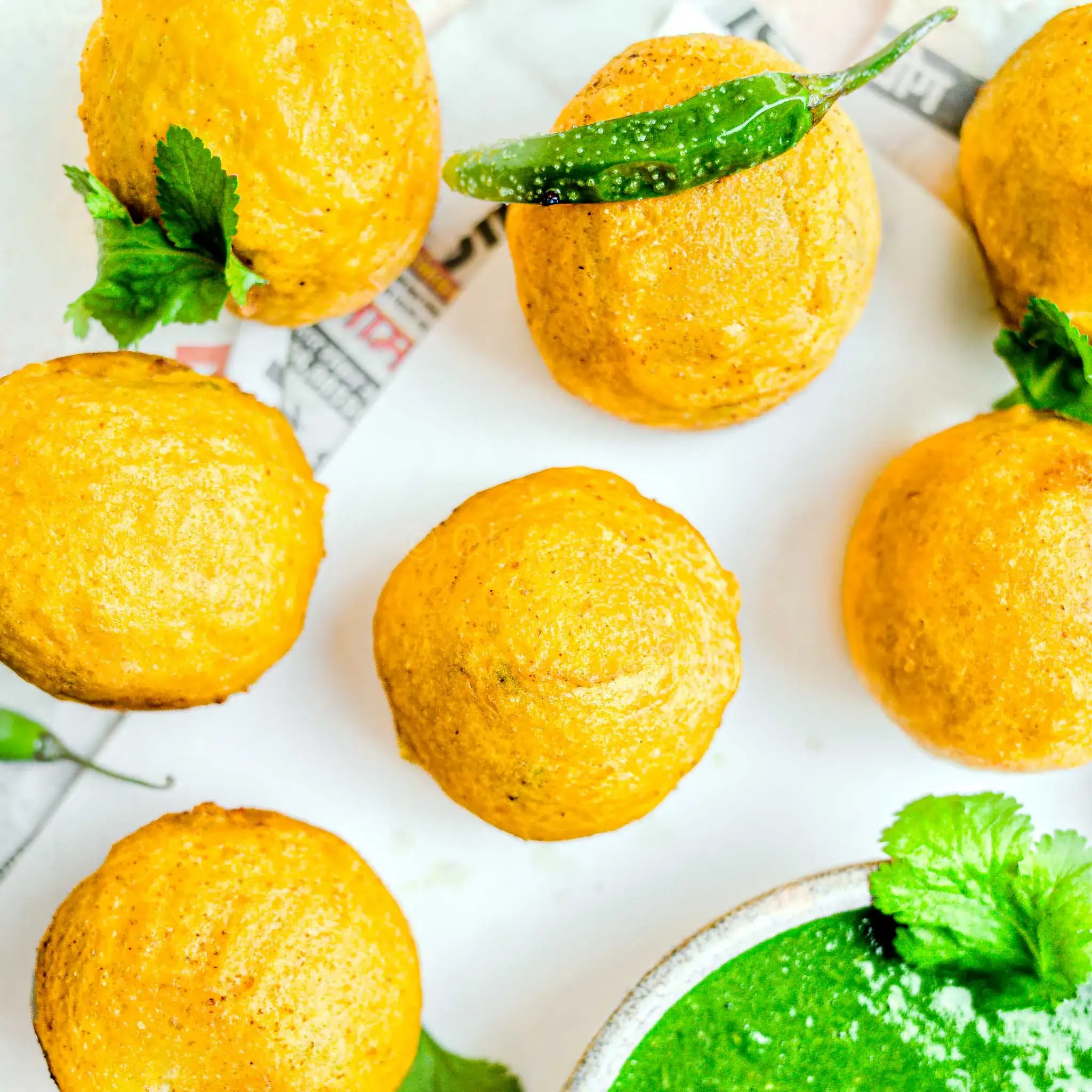
Whether you call them aloo vada, potato bonda, aloo bonda, or batata vada, these crispy potato fritters show why Mumbai leads India’s street food scene … and it’s not even close!
Strolling through any buzzing street in India’s lively financial capital, you’ll find piles of aloo vada holding their own alongside the legends: paneer pav bhaji spluttering away on massive tawas, onion bhajis sizzling in enormous kadais, and ragda pattice simmering in huge saucepans.
Most often, you’ll spot aloo vada stuffed into fluffy bread rolls to make the iconic vada pav, Mumbai’s answer to the burger. But they’re magnificent on their own, too (and totally underrated).
I’ve always thought that fried snacks are the ultimate comfort food during torrential monsoon rains, but they also carry through to the festive season (which is where I am right now, contemplating eating my fourth vada of the day!).
I don’t know about you, but the lead-up period to Dusshera and Diwali makes me want to eat as many snacks and sweets as humanly possible (after all, who are we to argue with tradition?), and batata vada are on my to-make list every Diwali.
The technique might look straightforward (and it is!) — gently spiced mashed potatoes, shaped into balls, coated in batter, and deep-fried until golden. But, as with so many recipes, getting each element right is the difference between good and genuinely irresistible aloo vada.
Now this is hands down the best aloo vada recipe I’ve tried. I’ve been perfecting it for years. The key breakthrough was realising I needed way less batter than most recipes suggested.
This one? It’s perfect for snack platters with chutneys, vada pav, or simply wrapping in newspaper and taking it with you to eat on the go.

❓What is Aloo Vada?
Aloo vada (literally “potato fritter”) is a cherished Indian snack that goes by many names. A few of the most common include aloo bonda, potato bonda, or urulaikizhangu bonda in South India and batata vada in Maharashtra.
Despite the different names, the concept remains beautifully simple: spiced mashed potato shaped into balls, coated in seasoned gram flour batter, and fried until golden.
What’s the Difference Between Aloo Vada and Potato Bonda?
Honestly? Not much beyond regional preferences and language.
Aloo vada (batata vada) is the original Maharashtrian recipe; most recipes are similar to the one featured in this post, with slight variations in spices. It may be synonymous with Mumbai, but batata vada is devoured all across the state, from Kolhapur to Nagpur!
On the other hand, potato bonda is popular in South India. This kind tends to be smaller and often includes crunchy urad dal in the tempering used to spice the potatoes.
😍 Why You’ll Love Aloo Vada

🌶️What Ingredients You’ll Need For Aloo Vada
Those fluffy, beautifully tempered mashed potatoes only need a few ingredients — and the light, crispy coating needs even fewer.
Most of these ingredients can be found in a standard grocery store, but you may need to head to a specialist Indian market for curry leaves and asafoetida.
Let’s see what needs to be on your shopping list, and what they add to the dish!
For the Potato Filling:
- Potatoes: Use a starchy potato such as Maris Piper, King Edwards, or Russets for the best mashed potato filling.
- Oil: For tempering the spices. Oil helps carry the flavours of the spices.
- Mustard seeds: Use black mustard seeds (not brown or white) for the best pop of bitter heat.
- Cumin seeds: Essential for warmth and that toasted, nutty flavour.
- Hing (asafoetida): Just a pinch adds depth and a savoury umami — don’t skip this even if it seems minimal. It’s the secret to a fantastic tadka.
- Curry leaves: Fresh curry leaves are non-negotiable — they provide that authentic, citrusy aroma of Maharashtrian cuisine. Dried curry leaves are positively bland in comparison.
- Green chillies: I always use thin jwala chillies for my Indian recipes. They boast a sharp, almost tart fieriness. Substitute for a less hot chilli, if you prefer.
- Ginger garlic paste: Homemade is always freshest; jarred paste leaves an unpleasant aftertaste, and frozen spits in oil. This combination adds pungency. Can be replaced 1:1 with freshly grated or minced ginger and garlic.
- Turmeric powder: Creates that beautiful golden colour and adds earthy warmth to the filling (and the batter).
- Salt: Season to taste throughout the cooking process.
- Lemon juice: One teaspoon brightens the entire filling and prevents the potatoes from tasting flat.
For the Batter:
- Gram flour (besan): Otherwise known as chickpea (garbanzo bean) flour. Naturally gluten free, it possesses a distinctive nutty flavour essential for Indian snacks like aloo vada, kothimbir vadi, and okra fries.
- Rice flour: To help the batter stay light and crispy. It’s not a must, but I think it makes quite a difference. Can be substituted for cornflour (also GF).
- Red chilli powder: Brings a more well-rounded, fruity heat to the dish.
- Salt: Season the batter properly — under seasoned coating ruins even the best filling.
You’ll also need to add water (not pictured) gradually to create the perfect consistency of batter.
Adapting This Recipe For Allergies and Dietary Requirements
This recipe is naturally gluten free, since both besan and rice flour are both free from wheat. It’s also vegan, nut free, soy free, and alcohol free, making it suitable for most dietary requirements and a fantastic option for parties and gatherings.
For a Jain-friendly version, omit the ginger garlic paste and use a pinch of extra hing instead to recreate the depth of flavour. It’s a well-known hack that really works!
Furthermore, for an oil-free, non-fry recipe, you could make the aloo vada in an appe pan. I include more details in the “how to make” section.
Substitutions
Like most Indian recipes, aloo vada has other regional variations that are absolutely worth exploring! Plus, there are some fun things you can play around with that aren’t totally authentic (or even a bit authentic) but still taste fantastic.
- South Indian aloo bonda often includes urad dal (split white lentils) in the tempering, contributing to all the mouth-watering layers of nuttiness. It also typically uses fresh grated ginger, as opposed to ginger garlic paste.
- For spicier versions, add half a teaspoon of coriander powder and a dash of garam masala to the potato mixture.
- Want more heat? Increase the number of chillies or use red chilli powder in addition to the fresh green chillies already listed in the recipe. Alternatively, serve the batata vada with a spicy chilli pickle — a fantastic option if you’re serving a crowd with differing spice tolerance.
- Add vegetables for a sliiiiiightly healthier snack. Okay, it’s barely healthier. But a handful of fresh peas tastes great mixed into the potatoes, as do carrots or even wilted spinach.
An important note: Gram flour is essential. Don’t even think about replacing gram flour with plain flour. The latter would create a batter that’s quite frankly inferior, both in taste and texture.
🧑🍳How to Make Aloo Vada (Step-by-Step Photos)
The key to perfecting aloo vada lies in getting both components right: properly seasoned filling and a light, crispy batter that doesn’t overwhelm the potatoes or become soggy and greasy. These stepwise photos show you how:
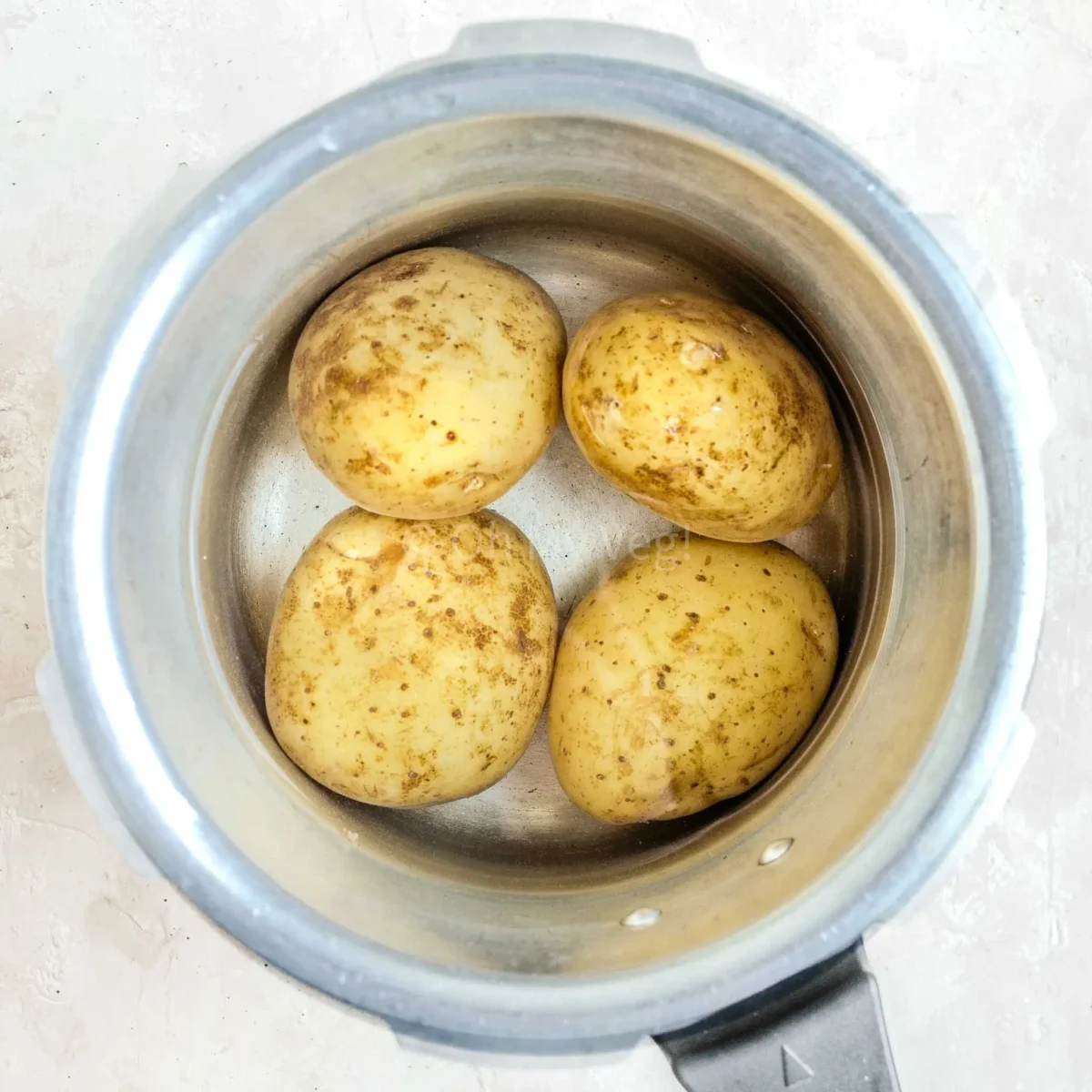
One: Boil the potatoes until they are fork-tender. While the potatoes boil, start making the batter.
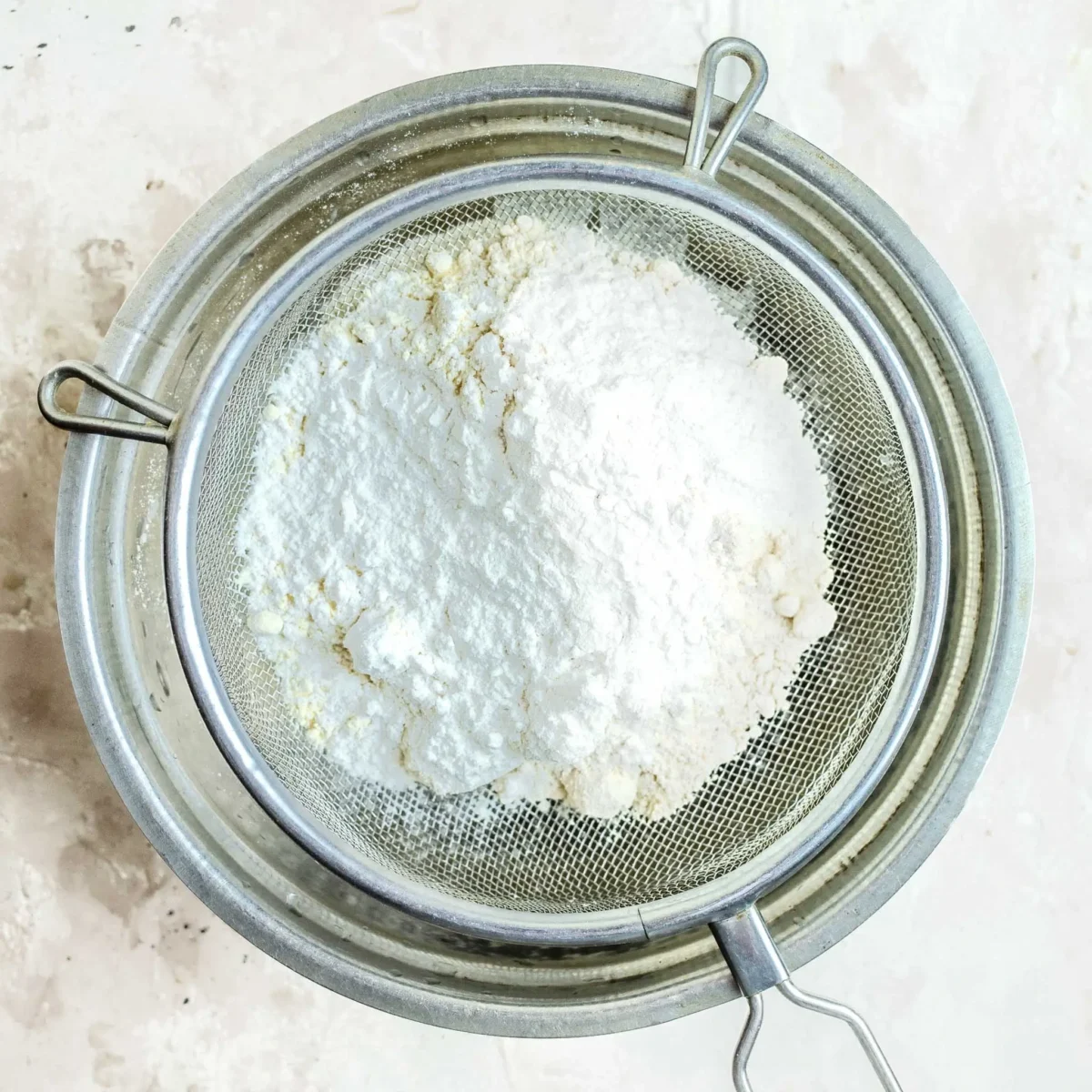
Two: Sieve chickpea flour and rice flour into a mixing bowl.

Three: Add turmeric powder and red chilli powder to the same bowl. Mix in.
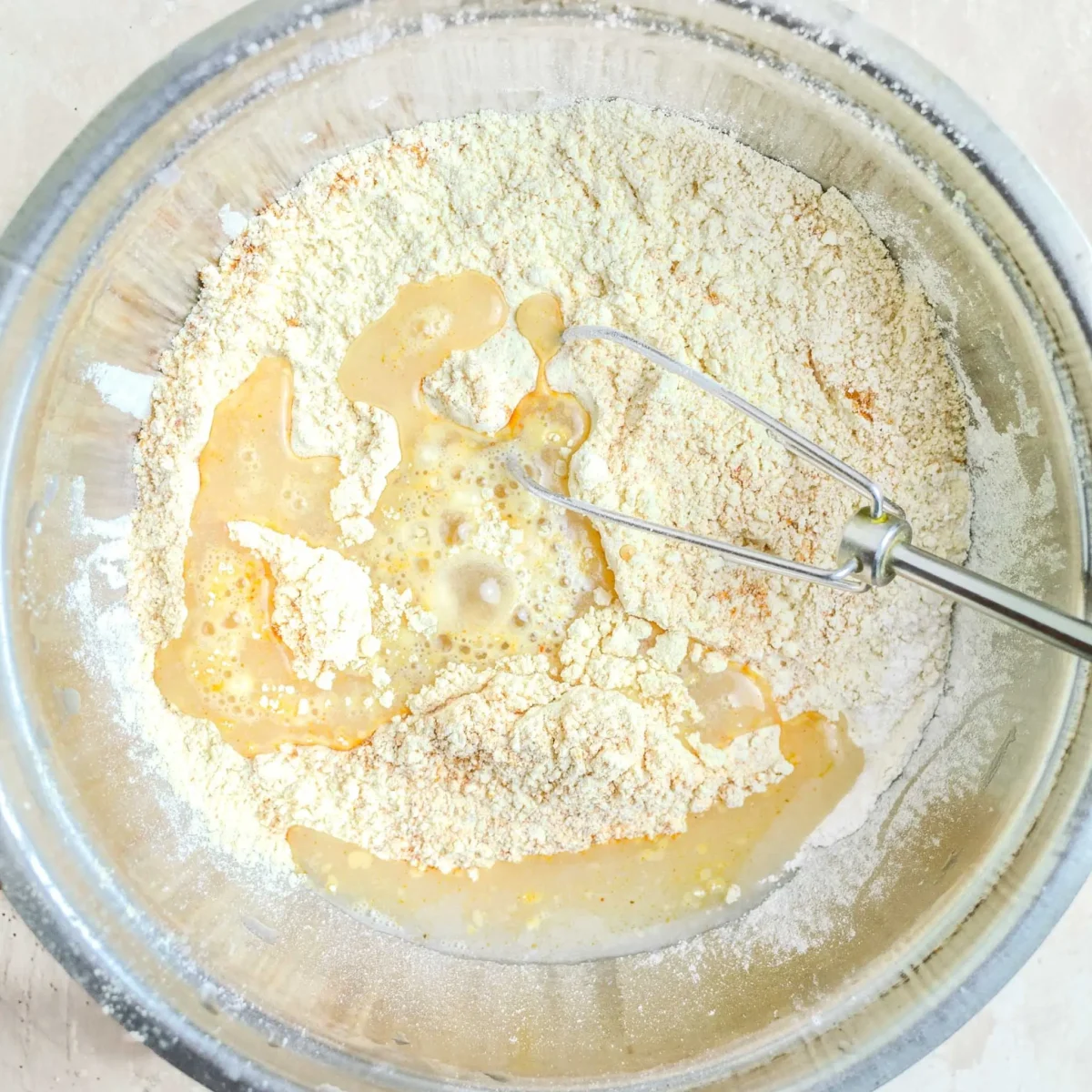
Four: Slowly whisk in the water. Add bit-by-bit to get a smooth consistency.
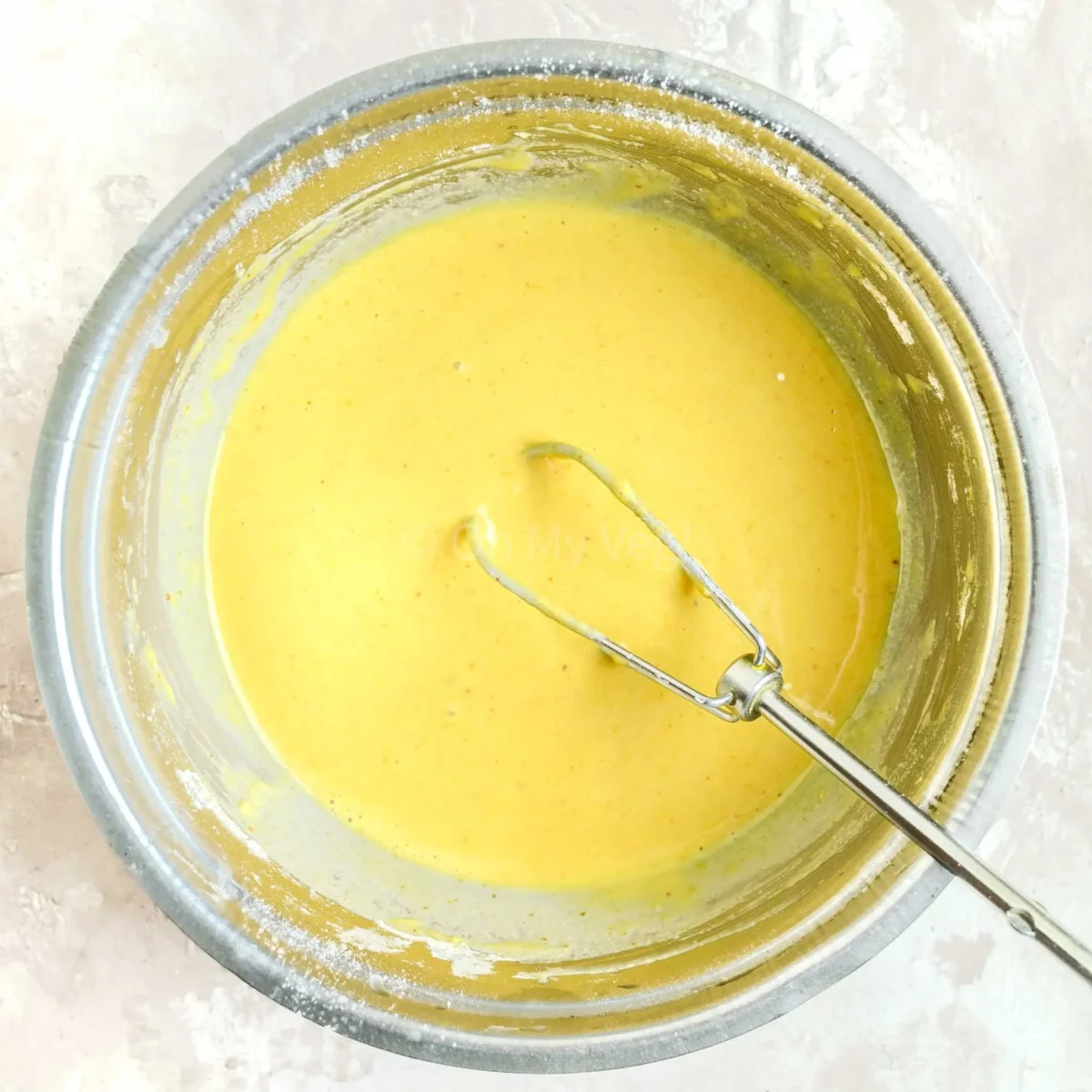
Five: Once smooth and flowing, set the batter aside to rest.
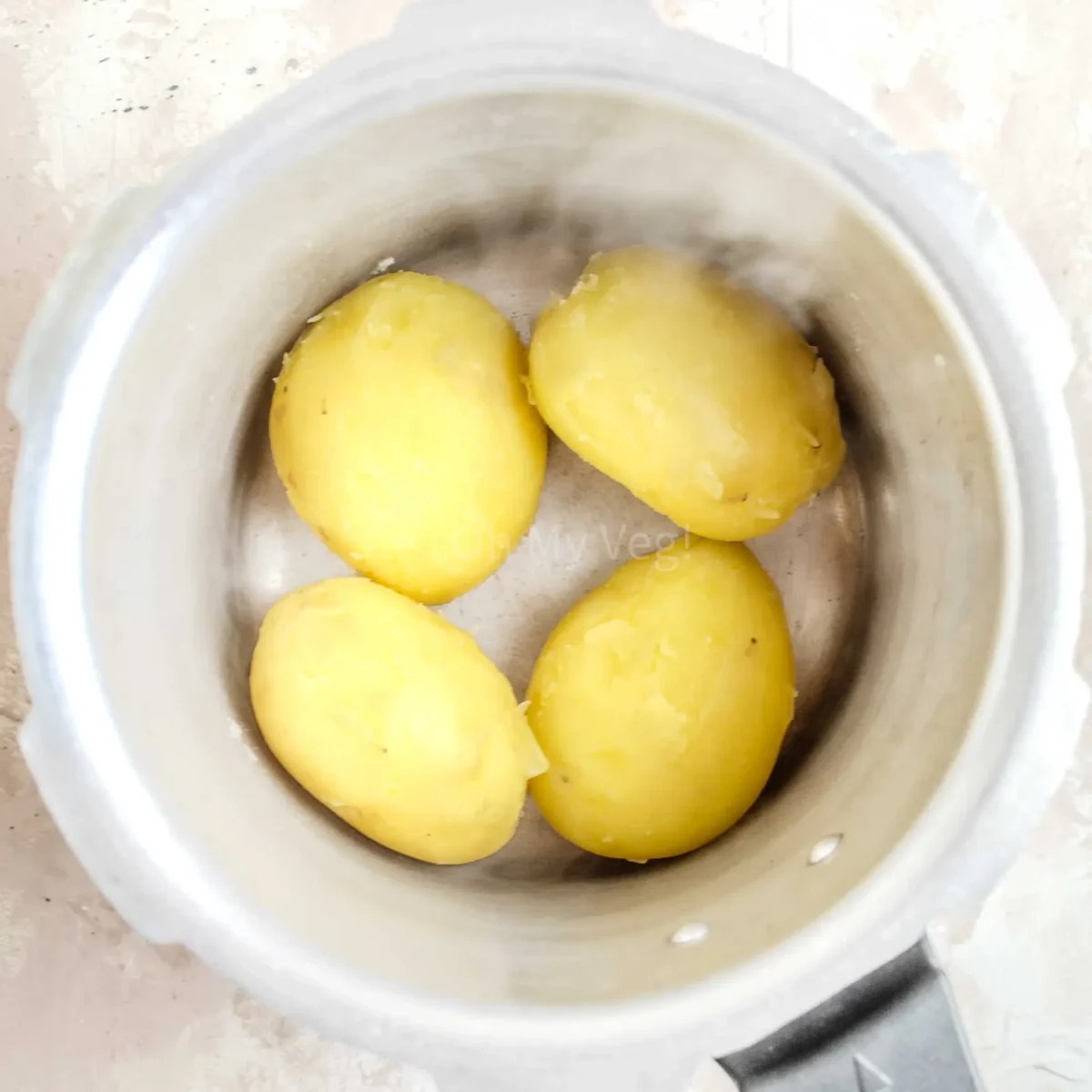
Six: When the potatoes have cooked, drain and cool. Peel the skins.
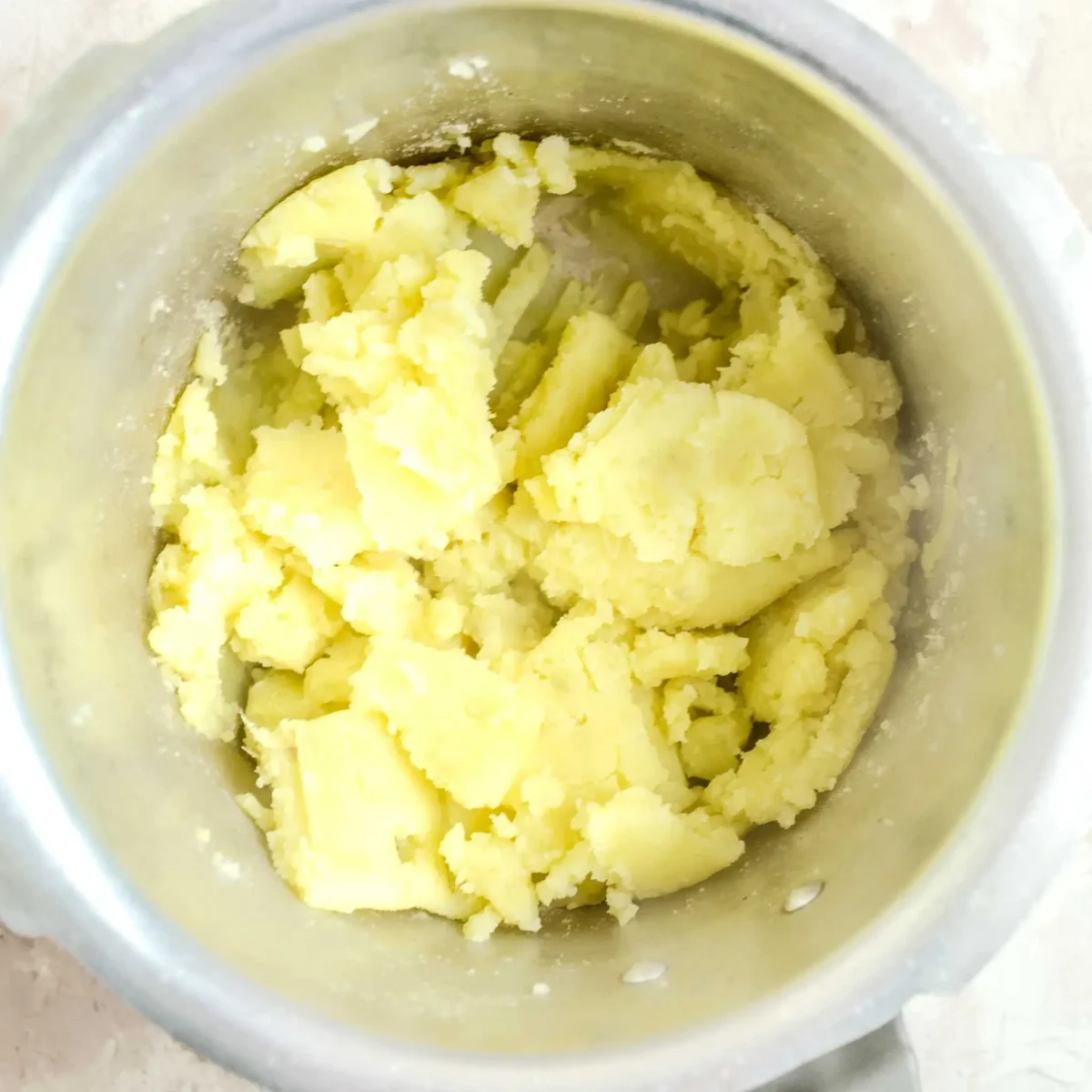
Seven: Roughly mash the potatoes. You want some texture, not a puree.
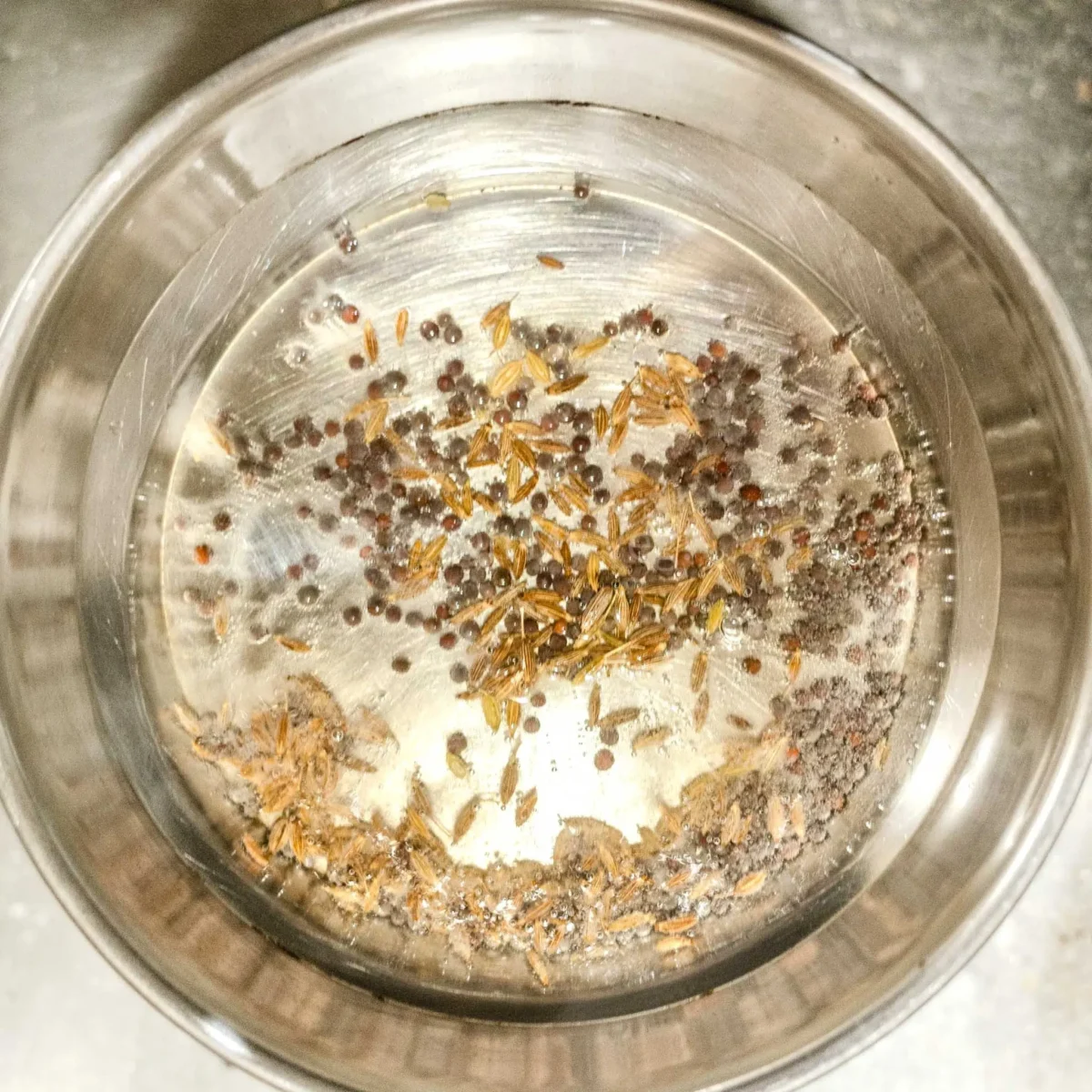
Eight: Heat oil in a small pan for the tempering. Add mustard seeds and cumin seeds, cooking until they crackle.
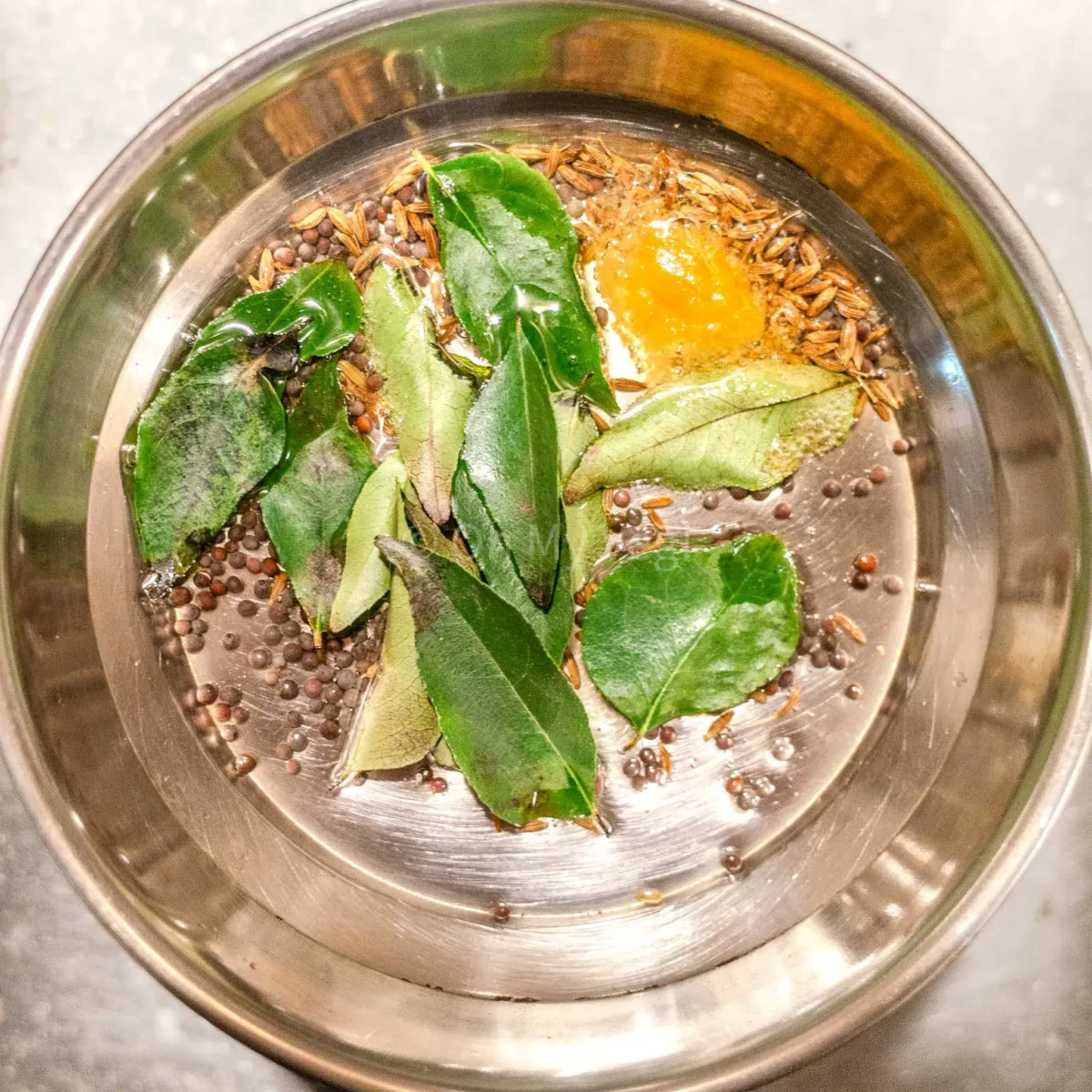
Nine: Add curry leaves and hing to the tempering. Careful — curry leaves splutter and spit.

Ten: Add the chopped green chillies and fry until aromatic.
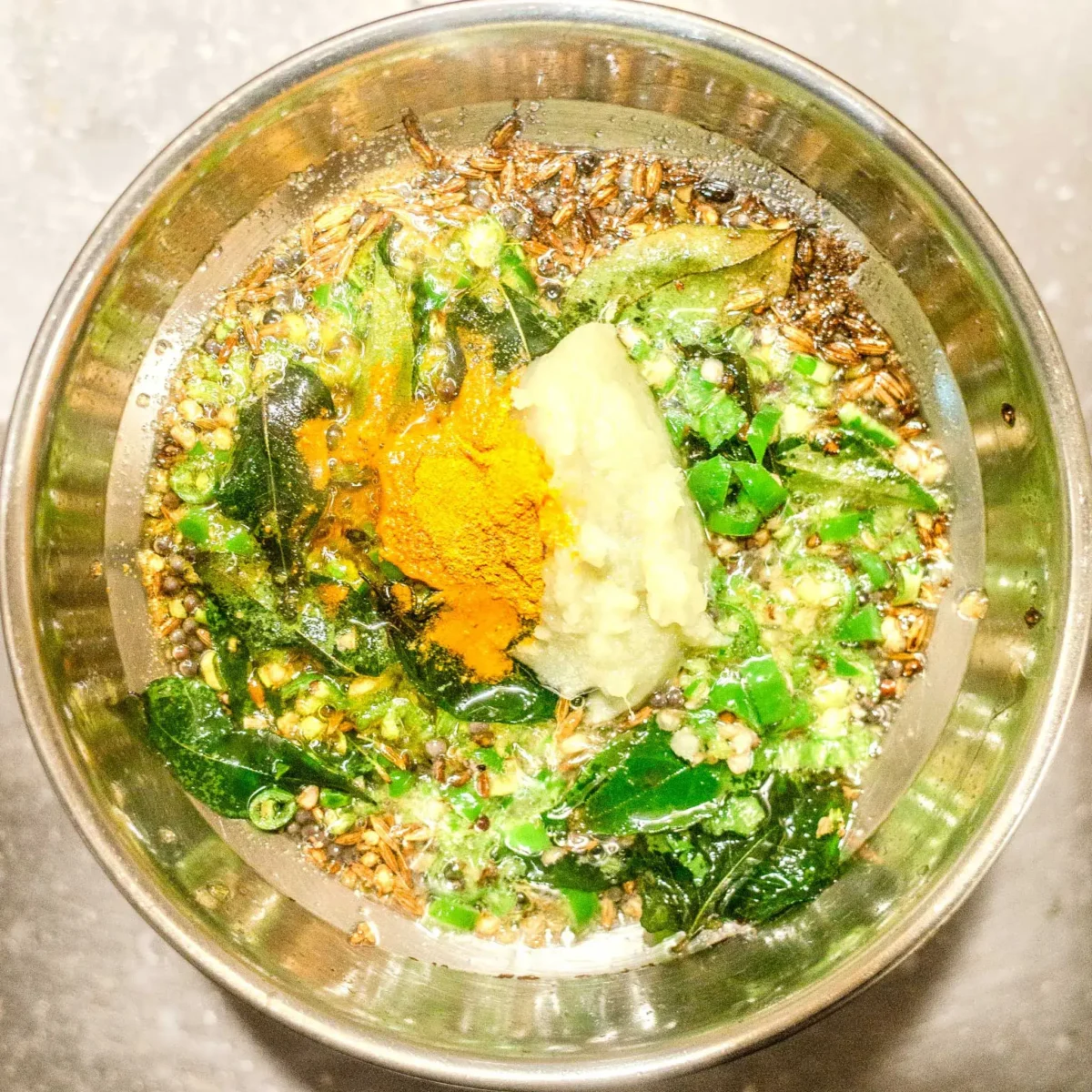
Eleven: Finally, add the ginger garlic paste and turmeric. Mix into the oil.
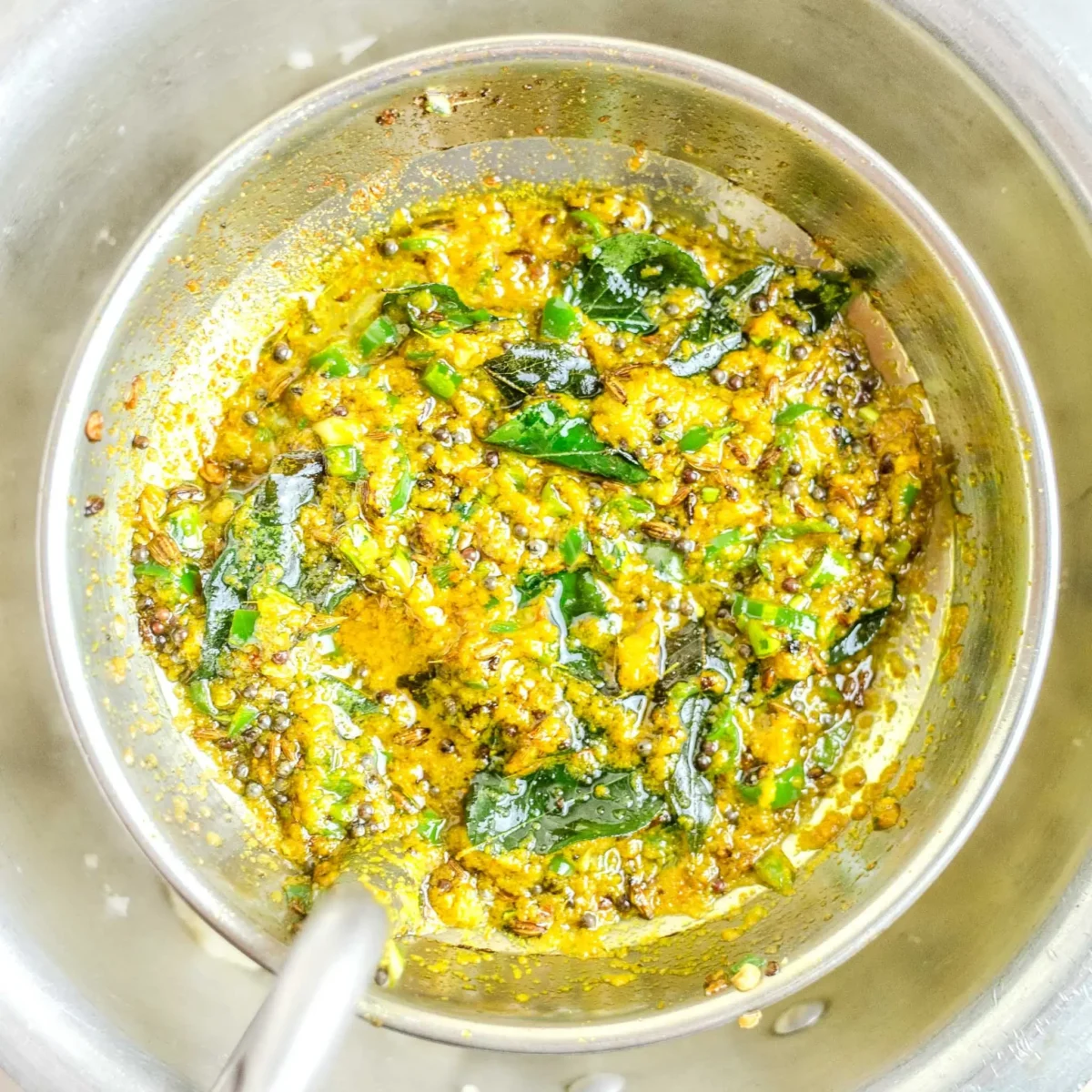
Twelve: Let the tempering cook for a few more seconds, then remove from the heat.
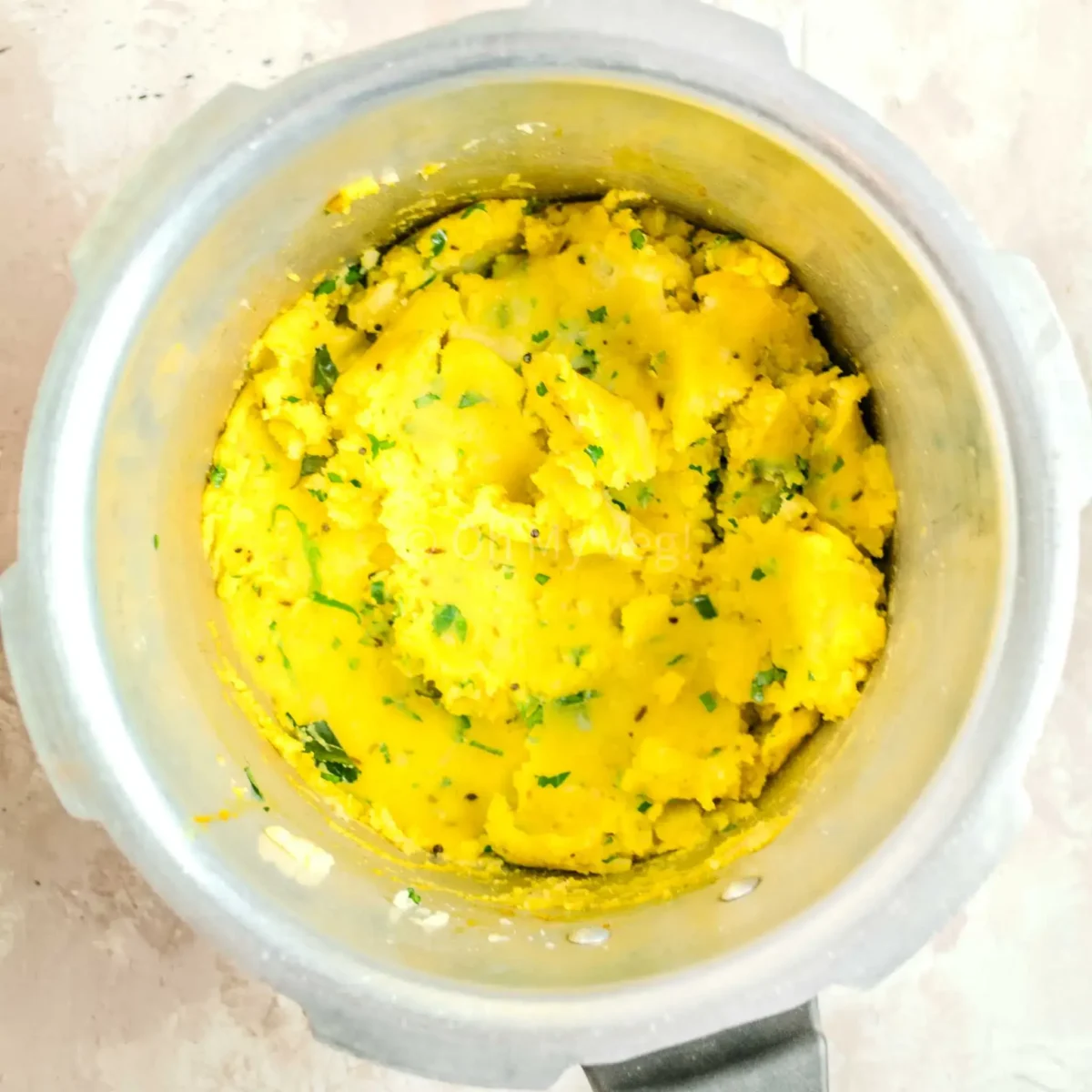
Thirteen: Pour the tempering into the mashed potatoes and mix well.
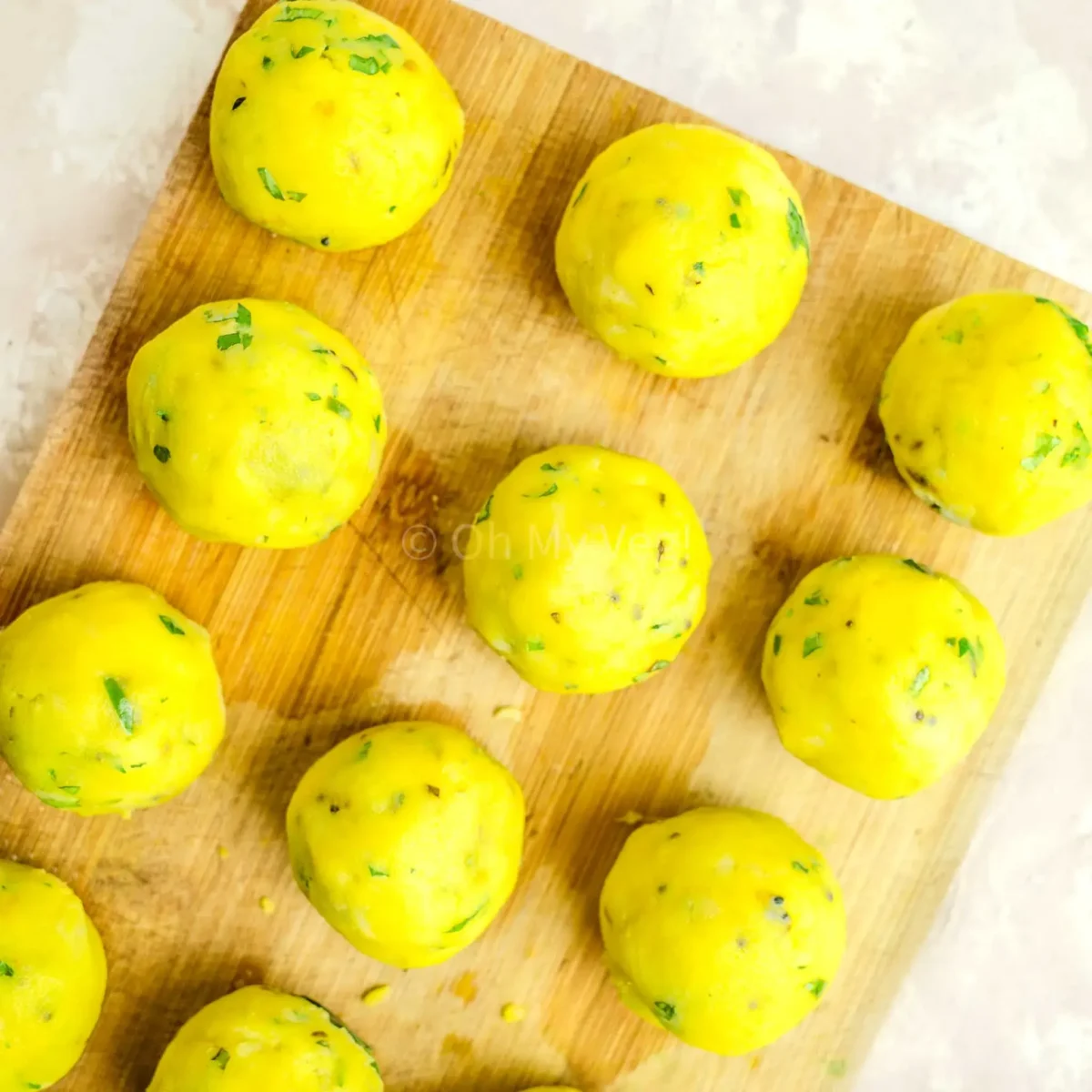
Fourteen: Once cool enough to handle, form small balls or patties from the potatoes.

Fifteen: Add a potato ball to the batter.
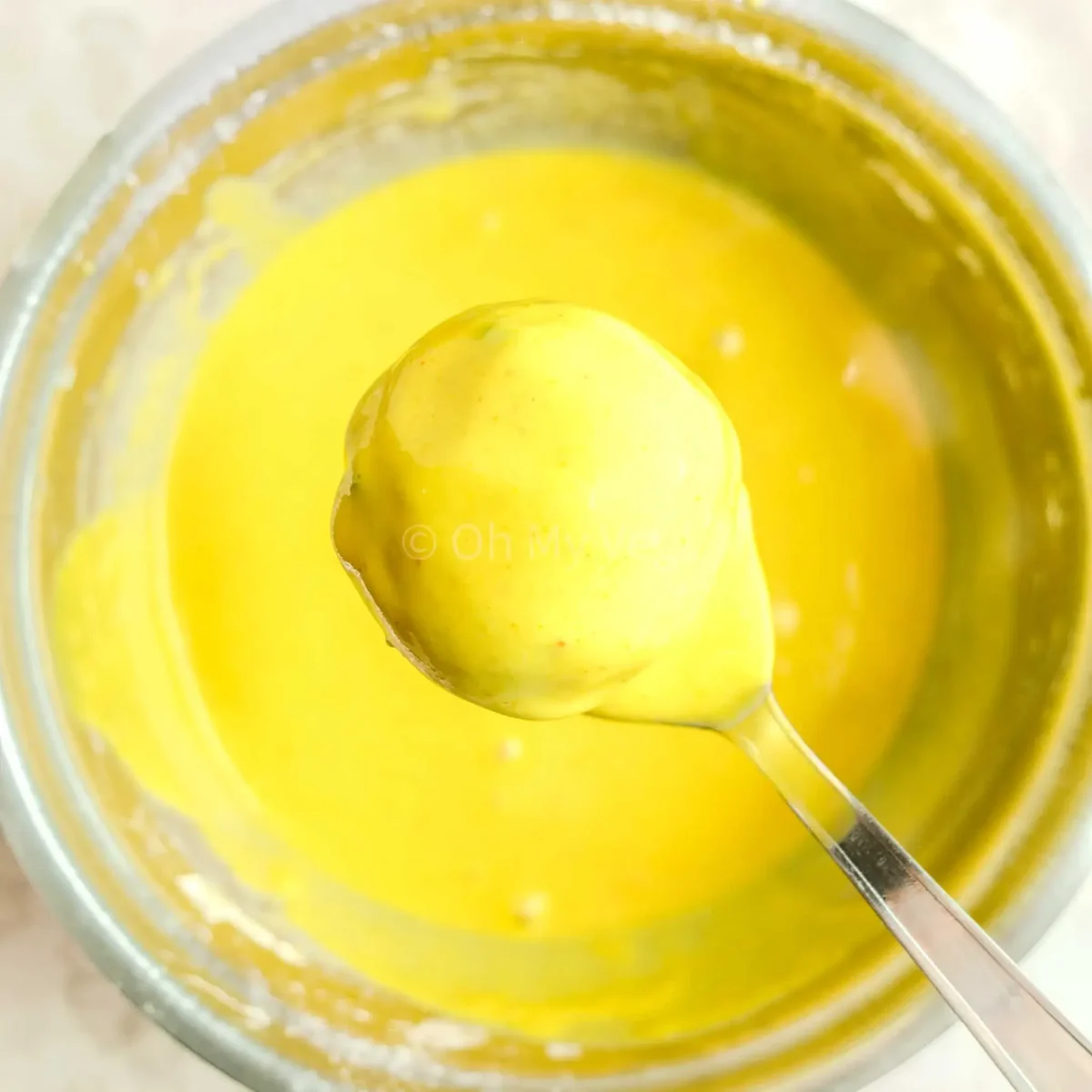
Sixteen: Coat the balls in the batter until entirely covered.
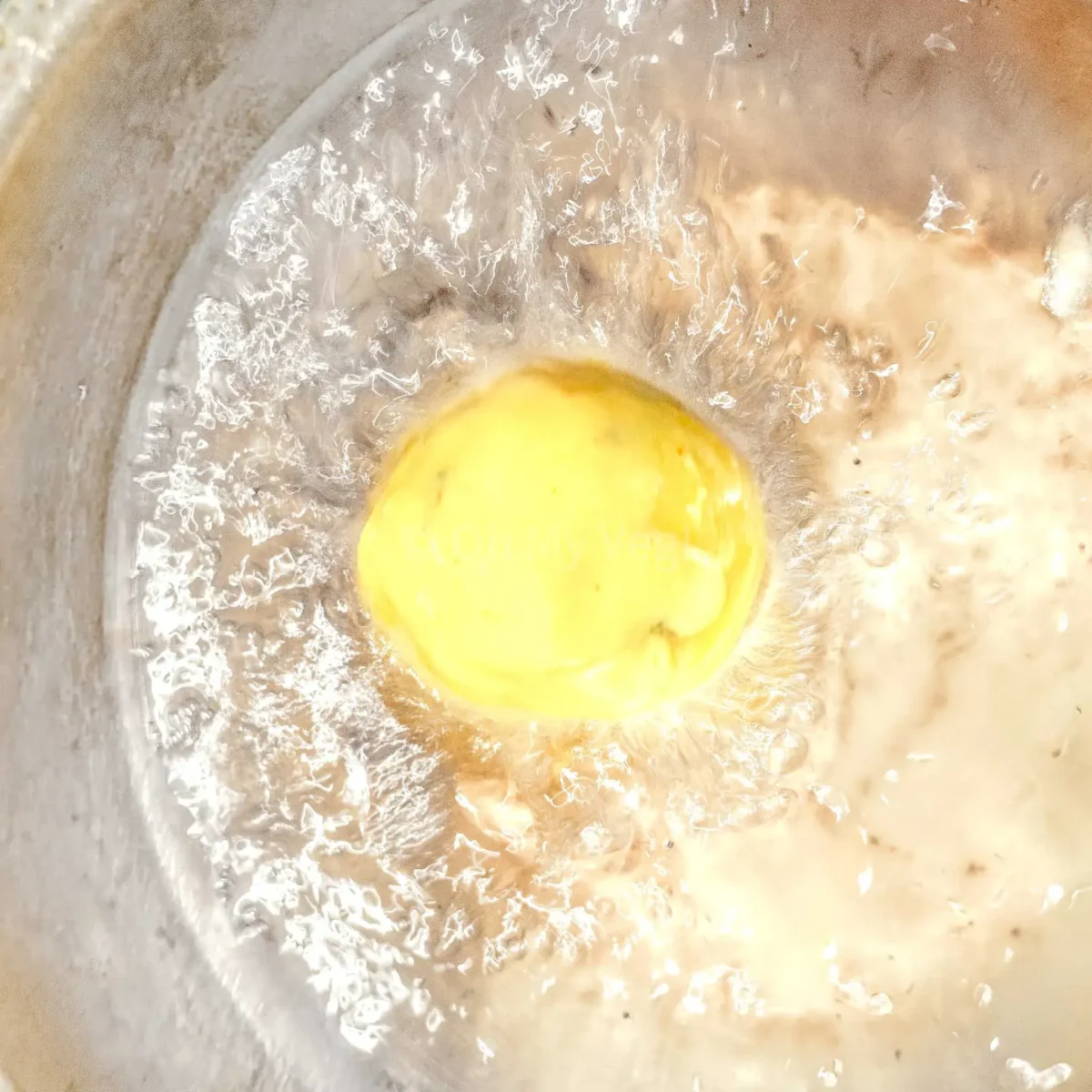
Seventeen: Fry the aloo vada in hot, pre-heated oil, until golden brown.

Eighteen: Drain any excess oil from the aloo vada by using a rack or kitchen towel.
Remember, the complete recipe (with ingredient quantities and instructions) can be found at the bottom of this page. You can also print the recipe, save the recipe, adjust the servings, and much more from there!
Aloo Vada Without Deep Frying
I know some people are thinking, “Do I have to deep fry aloo vada?” I get it — I really do. Whether you hate the smell, the health implications, or just the idea of hot oil sitting on your stovetop, there are countless reasons people avoid deep frying.
While many Indian snacks and starters (like Punjabi samosa and dahi puri chaat) taste just as good air-fried or even baked, the loose batter of aloo vada makes it impossible and very messy to attempt.
Instead, I recommend using an appe pan or paniyarakkal pan (fun fact: Danish ebelskiver pans work just as well, if that’s more accessible in your area!). The pan is ideally shaped for confining the batter. If you buy non-stick or season your cast iron well, you can even make the recipe oil free!
😱Common Mistakes to Avoid When Making Aloo Vada
Even experienced cooks can stumble with these seemingly simple fritters — goodness knows I’ve had my fair share of failures! Here’s how to avoid the most common pitfalls, so you can have delicious aloo vada every single time.
- Using warm potato filling makes it so much harder to coat the aloo vada. Always let your potato mixture cool completely first; stick it in the fridge to cool down quickly if necessary.
- Skipping the tempering. Don’t even THINK about this! I’ve seen people cutting corners and adding raw spices to their potatoes. It disappoints every time. Raw spices taste harsh and astringent; blooming them in oil is a MUST.
- Making your batter too thick creates a heavy, doughy coating instead of the light crispiness we’re aiming for. You shouldn’t have this issue with my recipe!
- Getting the oil temperature wrong. If your oil is too hot, it’ll burn the outside before the inside warms. Having the oil too cold makes the batata vada greasy, as it’ll soak up all the fat. Avoiding this is partly down to experience, but I always test my oil first (either with a drop of batter or a proper oil thermometer.
- Overcrowding the pan. A no-go for any deep-fry recipe. Overcrowding drops the oil temperature and makes your fritters greasy. It also prevents them from browning and makes it more likely your aloo vada will stick together.
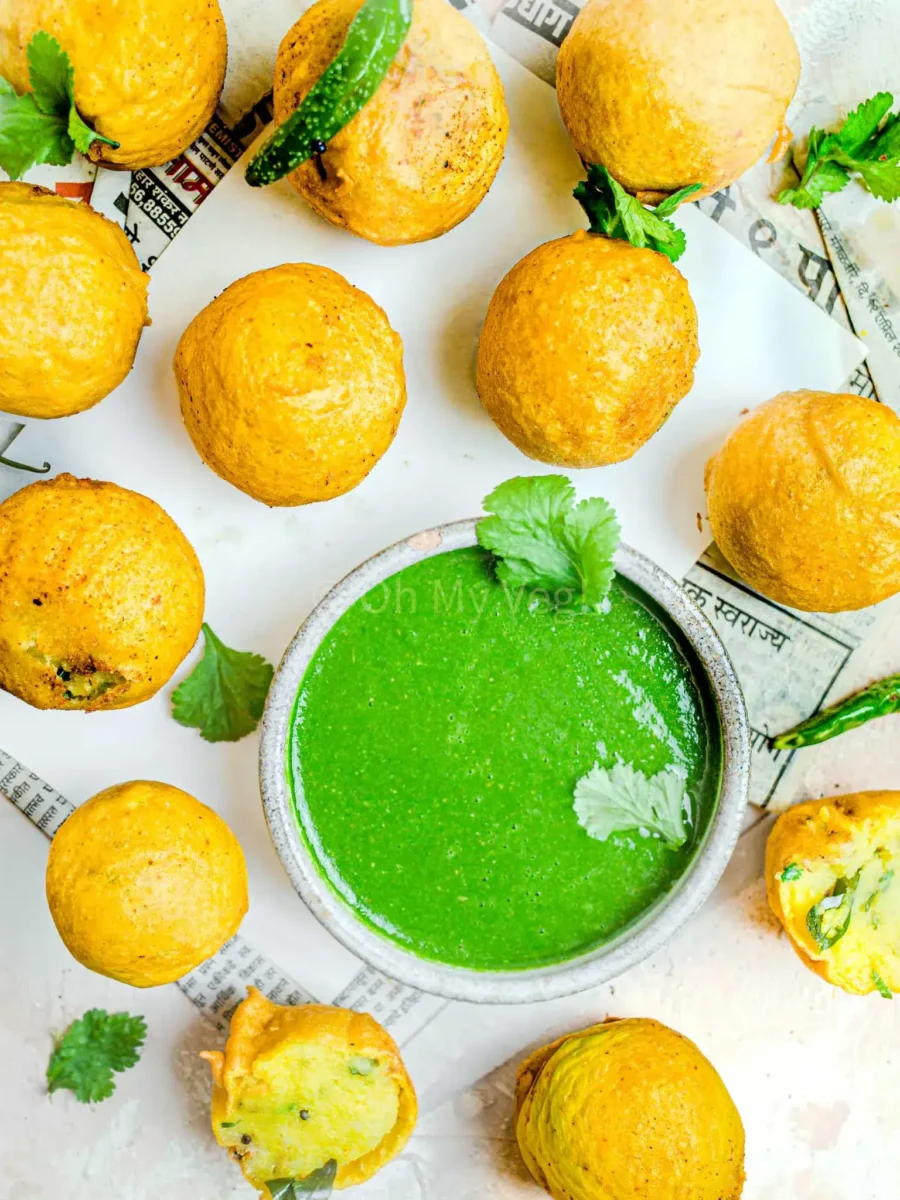
🫙Storing Aloo Vada
Fresh aloo vada are best eaten immediately while the batter is still crispy and the filling is piping hot! Honestly, there’s no feeling like it.
However, they’ll keep in the fridge for 2-3 days in an airtight container. Although they’ll lose their crispiness, you can reheat them later to restore some crispiness (although I’ll be honest, they’ll never be quite as good as fresh).
For freezer storage, I recommend freezing the shaped, uncooked potato balls without the batter. These potato balls can be frozen for up to 2 months. Then, all you need to do is make the batter and fry it directly from frozen (add a few minutes to the cooking time). It’s brilliant for party prep, especially during Diwali or hectic festive times!
Reheating works best in a hot oven (200°C or 392°F) for 8-10 minutes. Do not microwave (it makes the vada soggy). As mentioned above, aloo vada will never be as crispy as they were fresh out of the fryer.
🍔Serving Suggestions For Aloo Vada
Traditionally, Maharashtrian batata vada are served hot with tamarind chutney, green chutney, or good old ketchup. But why limit yourself? Instead, make a chutney tray with all three!
You could even add a South Indian flair and dip the aloo vada in classic coconut chutney or vibrant kara chutney.
Or, go completely off the rails (sometimes it’s the best thing to do!) and serve aloo vada with a Mexican fusion avocado cilantro sauce, which adds all the herby lemony goodness you need.
Other slightly more classic accompaniments include steaming cups of masala chaha (chai/tea) and deep-fried chillies sprinkled with salt.
During Diwali, I love to make a snack platter with my favourite dishes, plus the obligatory chakli, namakpare, bhakarwadi, kanda bhaje, and karanji. They also make crowd-pleasing canapés at parties!
Feeling a bit more peckish? Make a meal out of it and plate up aloo vada with misal pav, a glass of taak (spiced buttermilk) and gulab jamun.
However, the real Mumbai experience — and by far the most famous way to eat aloo vada — is sandwiched in a vada pav. Ideally, you’d serve it on newspaper and listen to the beeping cars going by for the full experience … but your dining table will do just fine!
If you tried this aloo vada recipe — or any other recipe on my website — please leave a 🌟 star rating and let me know your thoughts in the ✍️ comments at the bottom of the page. Thanks for being a part of my community!
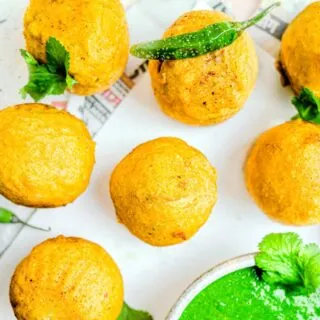
🥔 Aloo Vada Recipe
Ingredients
- 1 litre high smoke point oil for deep frying
For the Potato Filling
- 4 medium large potatoes starchy potatoes are best
- 1 tablespoon neutral oil
- ½ teaspoon black mustard seeds
- ½ teaspoon cumin seeds
- ⅛ teaspoon hing
- 1 sprig fresh curry leaves
- 3 green chillies finely chopped
- 1 teaspoon ginger garlic paste
- ⅛ teaspoon turmeric powder
- fine sea salt to taste
- 1 teaspoon fresh lemon juice
- 1 small handful fresh coriander cilantro, finely chopped
For the Batter
- 25 g gram flour besan/chickpea (garbanzo bean) flour
- 1 tablespoon rice flour
- 1 pinch turmeric powder
- 1 pinch red chilli powder
- fine sea salt to taste
- 3 ½ tablespoons water
Instructions
Boil the Potatoes
- Boil 4 medium large potatoes in plenty of water over medium-high heat, until fork-tender. While the potatoes are boiling, set to work on the other tasks.
Make the Batter
- Sieve 25 g gram flour and 1 tablespoon rice flour into a mixing bowl. Add 1 pinch turmeric powder, 1 pinch red chilli powder, and fine sea salt (to taste). Mix well.
- Slowly add 3 ½ tablespoons water to the mixture, whisking as you go. The aim is to create a smooth, lump-free, flowing batter.
- Set the batter aside to rest.
Make the Potato Filling
- Once the potatoes have cooked, drain them and then cool. Peel the skins and roughly mash; we don't want a puree, so some texture is great.
- In a small tadka pan, heat 1 tablespoon neutral oil over medium heat. Add ½ teaspoon black mustard seeds and ½ teaspoon cumin seeds. Let them crackle and pop, at which stage add ⅛ teaspoon hing and 1 sprig fresh curry leaves (be careful, they can splutter in hot oil!).
- Next, add 3 green chillies (finely chopped), and 1 teaspoon ginger garlic paste . Let this cook until the raw smell fades and it becomes aromatic instead. Add ⅛ teaspoon turmeric powder, give a mix, and then turn off the heat.
- Pour the tempering over the mashed potatoes and season with fine sea salt to taste. Squeeze over 1 teaspoon fresh lemon juice (to add brightness). Finally, add 1 small handful fresh coriander (finely chopped), and mix evenly through the potatoes.
- Once the potato mixture is cool enough to handle, shape into small, evenly sized balls.
Fry the Aloo Vada
- Preheat 1 litre high smoke point oil to 180℃ (356℉) in a large kadai, deep saucepan, or deep fat fryer.
- Once the oil comes to temperature, carefully dip one of your potato balls in the batter. Coat fully, then carefully transfer to the oil. Repeat this process, but don't overcrowd your fryer, as this can cause the temperature to drop and the vada to stick to each other. Don't disturb the vada for a few minutes (it can break the batter), then begin to turn them to evenly brown.
- When the aloo vada turn golden brown, use a frying spoon to carefully remove them from the pan, then drain any excess oil with kitchen tissue.
- Repeat this process until all the aloo vada have been fried.

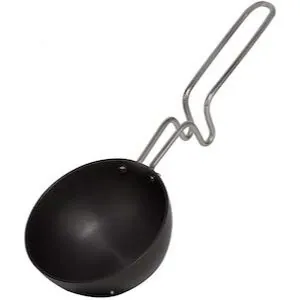
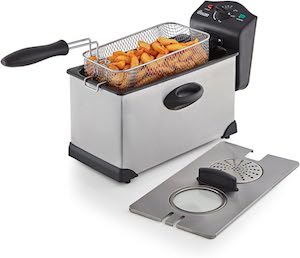
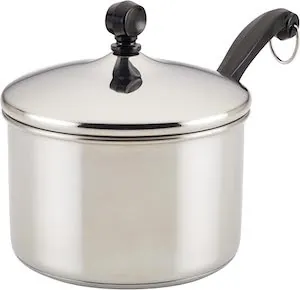
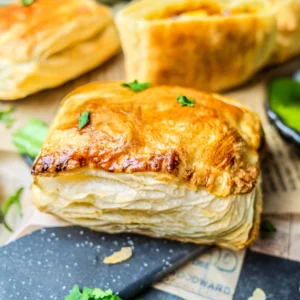



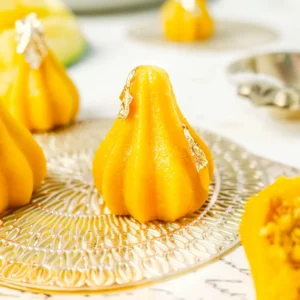
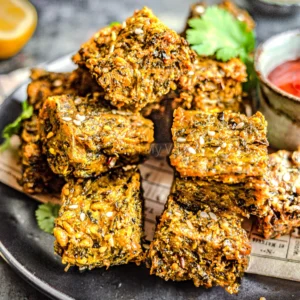
We made these last night, excellent recipe. Kids called them ‘potatoe bombs’ and wanted to save some for their lunchbox, needless to say we ate them all so will be making again.
You always know a recipe is a success when the kids love it! Thank you for trying the aloo vada (or should I call them potato bombs!) and leaving a review, Carly 🙂